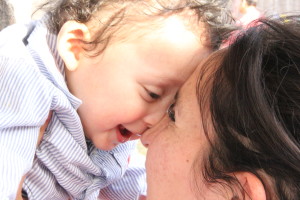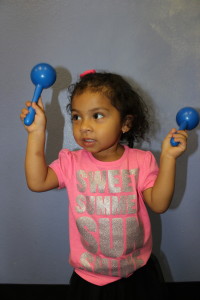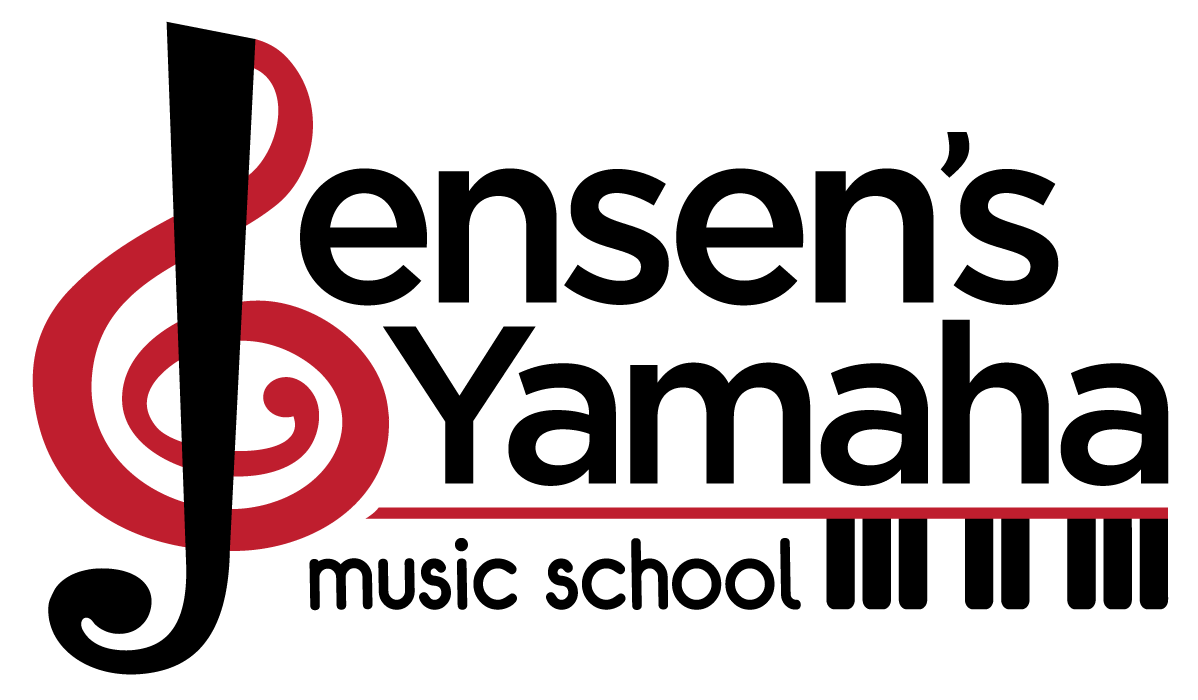Teaching Music as a Language
Music is a language. It’s a language we all understand, and that’s why it makes the most sense to teach music as a language. Instead of waiting to learn music by sight and under strict private instruction, music can be taught more naturally and much earlier, and the results are sensational. 
Think of your native tongue, your first language. You began speaking before you formed your first memories. And the process of learning to speak happened with the interaction of expert fluent speakers (your parents and caregivers) who would smile and encourage every little sound you made. You were also constantly hearing the language spoken freely and effortlessly spoken by all people around you. Humans are wired to hear and learn languages through this natural process which starts with intensive listening. From birth, and even before birth, babies begin to learn language with very little effort put forth by parents. It’s kind of amazing how it’s possible, when compared to the effort required by both the teacher and student when learning a language later in life.
I am still working on learning Spanish and I’ve had two years of classes in high school and have been working at if for the past five years. And yet, I know being as fluent as my husband (a native Colombian) would take more years of serious study, and I’d still not have an authentic accent. Music is the same way. A baby growing up with fluent musicians around singing to them, playing for them, and interacting with them using music will give them an ear for music and an understanding so deep that the fluency they will acquire is forever.
I’m always surprised that parents will wait until their child is 8 or 9 before enrolling them in music lessons. The reasons are usually because that’s the age a child can tolerate sitting still and receiving individual instruction for 30 minutes a week, can organize their time and have enough drive to practice on their own during the week, and can understand written music notation. But in terms of acquiring fluency in the language of music, 8 or 9 is way too late. The brain starts to depend on learning by sight rather than by ear, and the window is shut for good. Not to mention, very few 8 and 9 year-olds will stick it out and enjoy learning in this strict and very regimented environment. Not to say it’s not possible, it will just take much longer and have a different result: learning to play by reading, but not having an ear that recognizes music and can produce and create music by ear alone.
Knowing that the average parent may not be a fluent musician, how is it possible to help your child learn music the natural way, learning music as a language? The key is incorporating music into your child’s life early on. Just like a television show will not teach your child Spanish, listening to music on the radio alone will not teach your child the language of music. The language exists in the interaction, what it’s communicating, and how it makes you feel while hearing it and producing it. Music is also incredibly fun and playful. A child loves to dance and move to music, feeling the rhythmic pulses and distinct characteristics determining how their body moves to the music. They love singing, and being sung to, singing songs that make “cleaning up” a fun activity, or a soothing song to help them sleep and calm down, or an energetic silly song that makes them laugh, or songs that tell a story. Babies and children are also naturally drawn to musical instruments. They love to touch them, play with them, figure out how many different sounds they can make with them, and eventually figure out how to use them to create their own music. 
Singing and drumming are the first most natural instruments a baby can begin to play. They can start to match pitch, sing parts of songs, and know when it’s time to sing with their parent when listening. They also can turn almost any surface or thing into a drum. They start to bang spoons on plates and bowls, pat their hands on the ground or table, or clap their hands together. The trick is helping them hear how their singing and drumming go with the music, or how the patterns they do turn into music. But most importantly, give them the opportunity to play with music, enjoy it, and be encouraged with whatever sounds they make.
Our curriculum, The Yamaha Music Education System, specializes in teaching music as a language. Starting children at age three, using listening, singing and keyboard playing as the activities, with parent participation. And, of course, knowing how much music a child can learn before they are three, we offer a Family Music Time class that’s free and monthly, as well as a weekly class to help bring the language of music into the homes of families with babies and toddlers.
A very smart musician, Victor Wooten, made a TED-Ed Talk video describing music as a language in the best possible way, using music! I highly recommend giving it a watch and listen. He’s an amazing bass player, and really explains in the most beautiful way how music can be learned naturally.


This was so good. It reminds me that I need to listen more than teach in my private lessons.